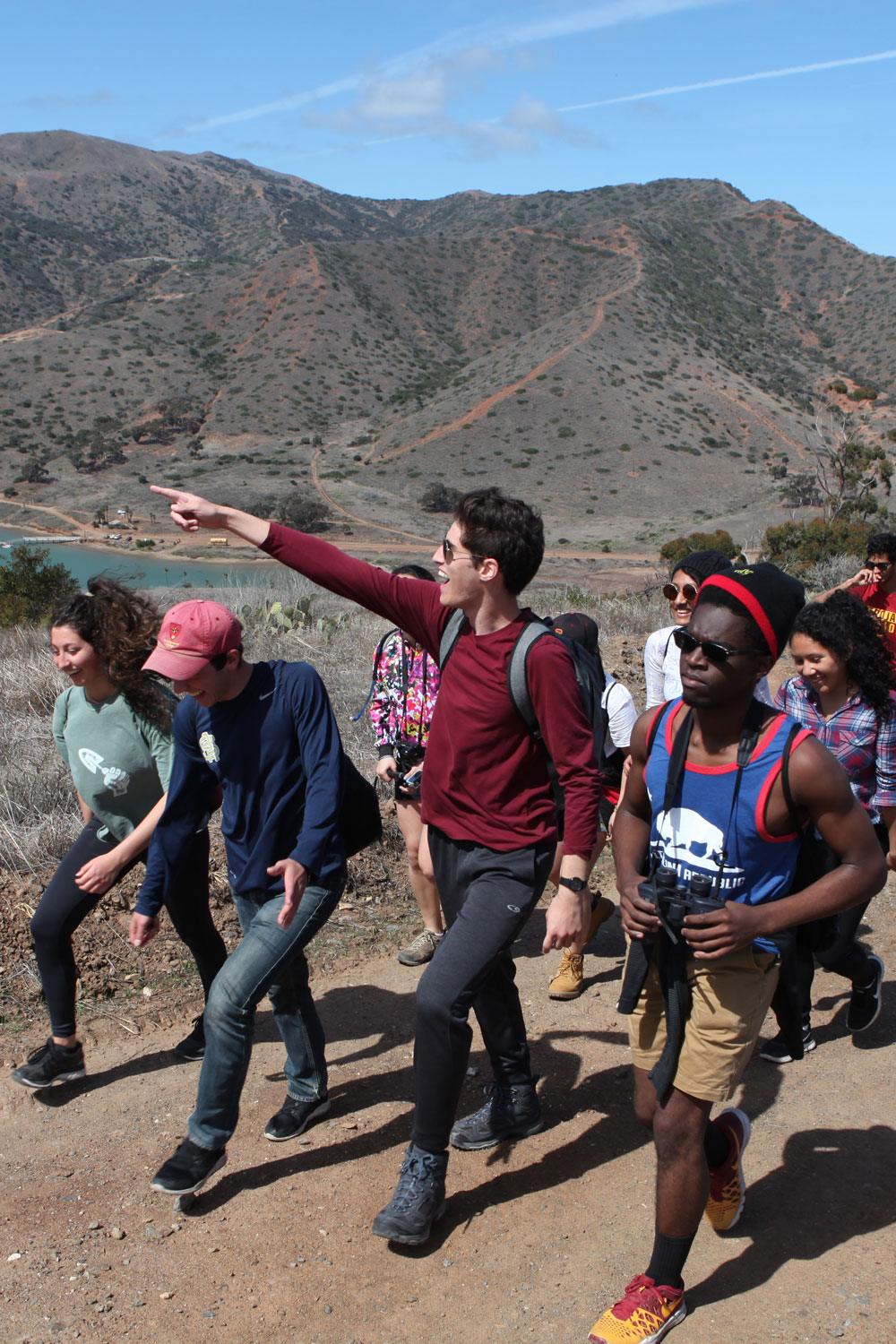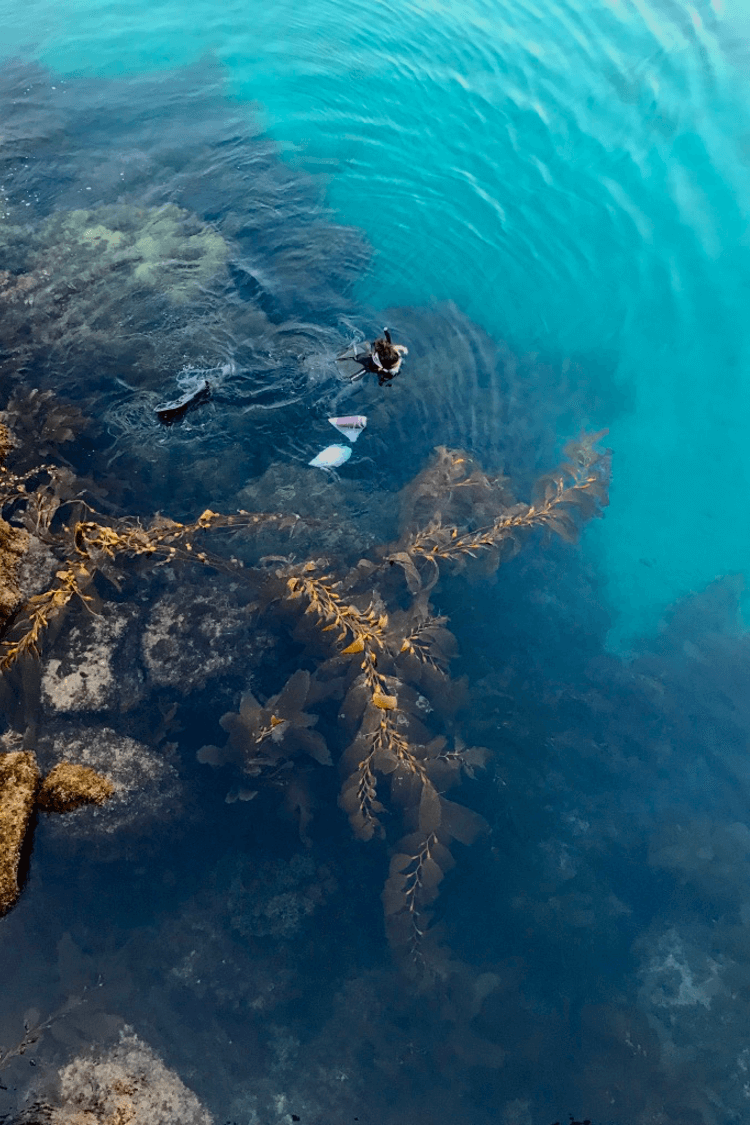Research
Solutions-Focused Research to Save the Planet
Whether through original research or by supporting the work of world-class faculty and fellows, the Wrigley Institute for Environment and Sustainability is leading the way to a more sustainable and equitable future.
Our research programs reach across the natural and social sciences, humanities, and the arts to create a holistic understanding of our environment. Whatever your field of study, we invite you to join us in solving the world’s most pressing environmental problems.

Wrigley Institute Research Centers
Our research centers mark a bold and important step forward in the mission of the Wrigley Institute. They merge the expertise of core faculty, staff scientists, postdoctoral fellows, and graduate students to tackle the challenge of sustainability from every angle.
Our Research Centers Focus on Three Themes
Earth and Environmental Systems
Focused on the natural systems that combine to form our environment, the Earth and Environmental Systems center develops scientific insights about and monitors our changing planet.
Applied Environmental Solutions
This center turns science into action by testing the feasibility of new climate solutions and determining how to convert them into workable practices and technology.
Social Transformation
Scientists working with the Social Transformation center seek applied insights about how people think, what they believe, and how they ultimately behave when it comes to the environment.


Support for World-Changing Research
At the Wrigley Institute, we believe that solutions come from everywhere. We offer fellowships, professional development, faculty awards, and other support to help advance evironmental and sustainability research from across disciplines and around the country.


Wrigley Marine Science Center
Located just across the San Pedro Channel from Los Angeles, our Catalina Island campus is the crown jewel of our research enterprise. Pristine surroundings, coupled with proximity to one of the nation’s largest cities, make WMSC a unique place to conduct both laboratory and field research.
Featured Stories

Environmental Studies alumn embarks on a sea-bound voyage, mapping the ocean’s floor
Growing up in a small town in western Georgia, Nick Foster spent his early life connected to the natural habitat surrounding him. Now an alumnus of the Environmental Studies Program in the Dornsife College of Letters, Arts and Sciences, he recently followed his passion for the environment across the North Pacific Ocean. The nautical voyage, hosted by the Ocean Exploration Trust, was a part of a global effort to map the entirety of our world’s oceans. Foster graduated from high school knowing that he wanted to pursue higher education, but he wasn’t quite sure what to study. He joined the Marine Corps and was stationed in Hawaii, where he developed an affinity for ocean science. Above all, his connection with the community near his base, and the community’s connection with the ocean, affirmed his admiration for the deep blue. “Everybody there is so intertwined with the ocean. How could you not be on an island? So being in this environment really just furthered my love of the ocean,” Foster says. After spending several years on the Island, Foster returned to the U.S. mainland to further his education. He planned to fund his studies through the G.I. Bill but discovered that it caps tuition coverage at $25,000 per year for private schools. USC’s participation in the Yellow Ribbon Program, which waives tuition not covered by the G.I. Bill, made the university affordable for Foster. In 2017, he enrolled as an undergraduate major in the Environmental Studies Program (ENST), with a minor in Geographic Information Systems and Sustainability Sciences. ENST proved the perfect home for a curious, ambitious student like Foster. “While I was an undergrad, I would do anything I could to get out there and learn as much as I could about anything directly related to ocean exploration or ocean science,” Foster says. His motivation would lead him to accepting an internship at Esri, a global market leader in Geographic Information Systems (GIS). While attending the Esri Ocean, Weather, and Climate GIS Forum, Foster met key leaders of the Ocean Exploration Trust (OET), a nonprofit dedicated to uncovering the mysteries of our oceans. Among many other initiatives, OET has been working in conjunction with the General Bathymetric Chart of the Oceans (GEBCO) to complete Seabed 2030, an ambitious project to create a free, definitive, and publicly available map of the world’s ocean floor by the year 2030. The project captivated Foster from the moment he learned about it. “We know more about the surface of the Moon and Mars than we do about our own planet,” he says. “There’s more ocean than there is land, and we know very little about the deep ocean.” He applied to embark on a 10-day excursion to map a portion of the ocean floor with OET, and a few months later, his application was accepted.
In a Warmer World, Half of all Species Are on the Move. Where Are They Going?
The tie of environmental and human histories in Owens Valley
Have you heard of Payahuunadü? What about the Owens Valley? Many people who live in Los Angeles are not familiar with the region, although Los Angeles receives about 38% of its water from this valley and historically Los Angeles has relied on it for up to almost 80% of its water. I have come across this lack of recognition countless times since launching my dissertation research this summer. This confusion creates a brief stumbling block in explaining my research, but, more importantly, it indicates a deeper issue. Many residents of L.A. do not know where their water comes from, or the rapacious and destructive history of how L.A. obtained water for its residents. The Owens Valley is a small valley in central eastern California. About three and a half hours northeast of L.A. by car, this valley is bordered by the Eastern Sierras to the west and the Inyo and White Mountains to the east. Its wealth of water comes largely from snowmelt in the Eastern Sierras that funnels down to the Owens River and the valley’s groundwater reserves. The recent human history of the valley is one of conquest and environmental damage. For most of the valley’s existence, the Owens Valley Paiute cultivated the land. They dug a complex set of irrigation ditches that watered their taboose and other key crops, and they migrated in seasonal rotations to different parts of the valley. View of the current dry Owens Lake, with dust mitigation efforts in place such as shallow flooding of certain areas. (Photo by Lauren Kelly) In the 1860s, however, white American settlers moved into the valley and began a war of conquest. After years of conflict, settlers wrestled control of the valley from the Owens Valley Paiute. The settlers established farms and ranches, and created a complicated system of water rights that did not acknowledge Indigenous prior knowledge or claims to the valley’s resources. In 1905, Los Angeles began the process of seizing power from both groups. The city began buying land and water rights in the valley, and they completed the Los Angeles Aqueduct in 1913 to whisk its water down to rapidly-expanding L.A. Over the rest of the twentieth century, L.A. would buy 96% of the farmland in the Owens Valley. It built a second aqueduct in 1970, and increased groundwater pumping to unprecedented levels. Its water extraction not only severely altered the ecosystems of the valley, but it dried Owens Lake, leading to the largest source of dust pollution in the country. After about three decades of advocacy and litigation, L.A. began court-mandated efforts to mitigate the dust pollution, which has improved conditions in recent years. But even in the present day, L.A. is planning new infrastructure to grab water from the northern reaches of the valley. Owens Valley residents contend with L.A. as a dominating force in the region, but LA’s priorities don’t reflect the actual people living in the valley. Researching water politics of Owens Valley using the book Owens Valley Revisited by Gary D. Licap (Photo by Nick Neumann/USC Wrigley Institute) My dissertation seeks to tie these environmental and human histories together. As new people moved into the valley and fought for control over its resources, power dynamics grew more complex and uneven. I am studying this diverse constellation of historical actors and how they crafted their lives while dealing with the history and ongoing realities of conquest. I also examine the progression of environmental damage in the valley across the twentieth century and how residents responded to and fought against these intrusions. Throughout this story, I want to emphasize the voices of the Owens Valley Paiute. Many historians have not focused on their role in the water conflicts with L.A., but the Owens Valley Paiute in fact played a key role in negotiating over land, and have continued to advocate for their stewardship and land rights through the present day. In my work, I hope to uncover lessons relevant to our present-day confrontations over limited resources and degraded landscapes. Balancing the needs of Angelenos with those who live in the Owens Valley is a monumental challenge which will require an awareness of historical impacts of violence and multiple thefts of land and water. Conducting research by annotating and taking notes. (Photo by Nick Neumann/USC Wrigley Institute) This summer, entering my fourth year in the History department, I began my dissertation research. I dove into secondary source literature, with volumes such as The Spoils of Dust: Reinventing the Lake That Made Los Angeles by Alexander Robinson, a professor in USC School of Architecture. I also started work with primary source documents in the Huntington Library. I read settler accounts of life in the valley from the nineteenth and early twentieth centuries, including diaries and ledgers written by subjects varying from seasoned farmers to teenage girls. I also began reading the papers of lawyers who helped an assortment of Owens Valley water and power companies fight for their place in the valley or negotiate the dissolution of their companies in the first decades of the twentieth century. I conducted online research into the many committees and advocating groups at work in the valley over the last century, such as the Owens Valley Irrigation District and the Owens Valley Indian Water Commission. Finally, I started reading and listening to oral histories taken from various Owens Valley Paiute tribal members, white ranchers, and LADWP workers in the late twentieth century. This work is still in preliminary stages, but I am starting to build familiarity with the clamor of voices and narratives coming from the valley throughout its history and into the present day. People who live in Los Angeles need to be aware of where their water comes from. In the coming decades, we will face even more limited resources in the face of a warming planet. We need to reckon with past environmental challenges and ask ourselves if those outcomes were just. I argue that Angelenos should take a larger role in advocating for fair treatment of the places that currently supply its water, and this history should inform how we deal with future questions of resource management. We need to strive for equitable and environmentally conscious solutions to water and drought crises that we will continue to face. I would like to give a huge thank-you to the Wrigley Institute and Wrigley donors for supporting my research this summer. The connections I have made through this program have inspired the direction of my research and shown me how uplifting an interdisciplinary research community can be.
